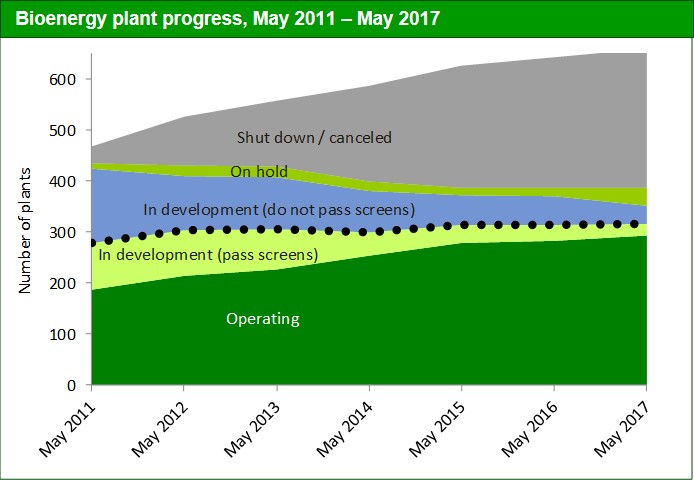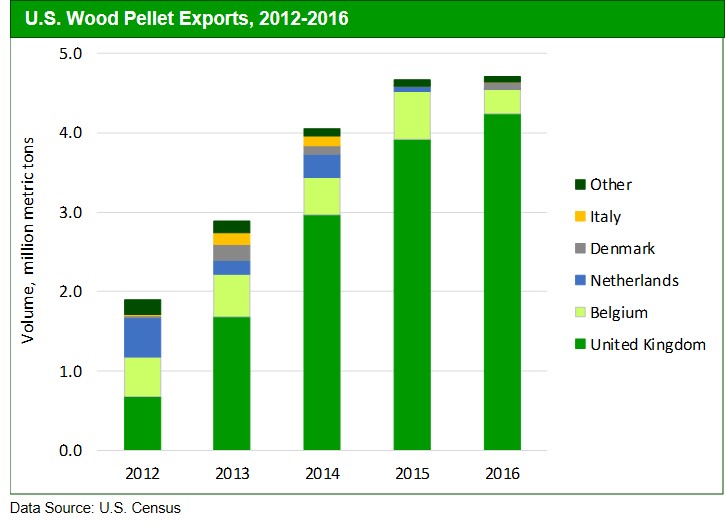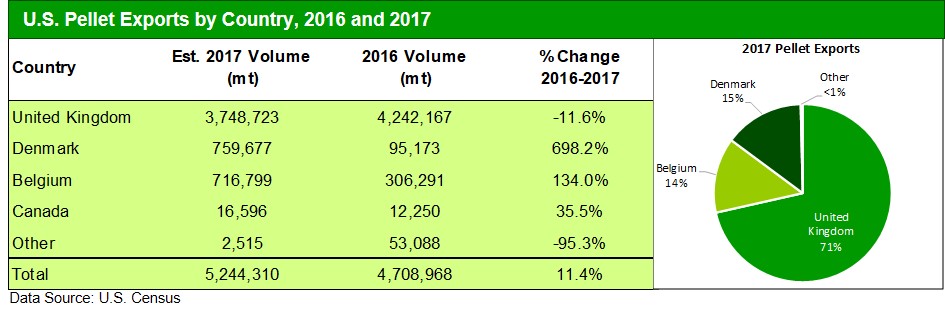This post includes an excerpt from the bioenergy research authored by Andrew Copley and Amanda Lang published in the Q2 2017 Forisk Research Quarterly (FRQ) Publication.
U.S. wood bioenergy project announcements have slowed; any meaningful growth, if realized, will occur in the next three years.
In the U.S., wood bioenergy project failures continue to outpace successes. As of April 2017, Forisk’s wood bioenergy database tracks 436 operating and announced projects, which represent potential wood use of 112.2 million tons per year by 2026. Based on Forisk’s analysis, 298 projects pass basic viability screening, indicating potential wood use of 77.6 million tons per year. However, year-over-year the “operating” category increased by 11 projects, while 16 projects were moved to “Shut down/canceled” and 19 to “On hold.” Though an additional 58 projects remain in the developmental phase, only 38% of these pass Forisk’s screens. The figure below provides a historic look at the number of U.S. wood bioenergy facilities.

Changes in wood pellet trade flows occur as the export market diversifies.
U.S. wood pellet exports have grown at a compound annual rate of 25.5% since 2012, with the U.S. exporting 4.7 million metric tons in 2016. Since 2012, when no importer had more than 35% of U.S. market share, export volumes have become increasingly consolidated. In 2016, 90% of all U.S. wood pellet exports went to the UK. The second largest importer, Belgium, represented 7% of the market. All other countries combined represented 3%.

This trend of consolidation appears to be abating. Through February 2017, Denmark was the second largest importer of U.S. wood pellets, accounting for 15%, or 127 thousand metric tons. Though Denmark is on pace to import over 700 thousand metric tons in 2017, the UK remains the largest importer of U.S. wood pellets. The UK and Belgium represented 85% of all U.S. wood pellet export volume through February 2017, down from 98% this time last year. The UK alone was 83% of this volume in 2016. While U.S. wood pellet exports overall were 9.0% higher year-over-year through February 2017, exports to the UK were down 6.5%.

To download the most recent Wood Bioenergy Summary, click here.

Leave a Reply